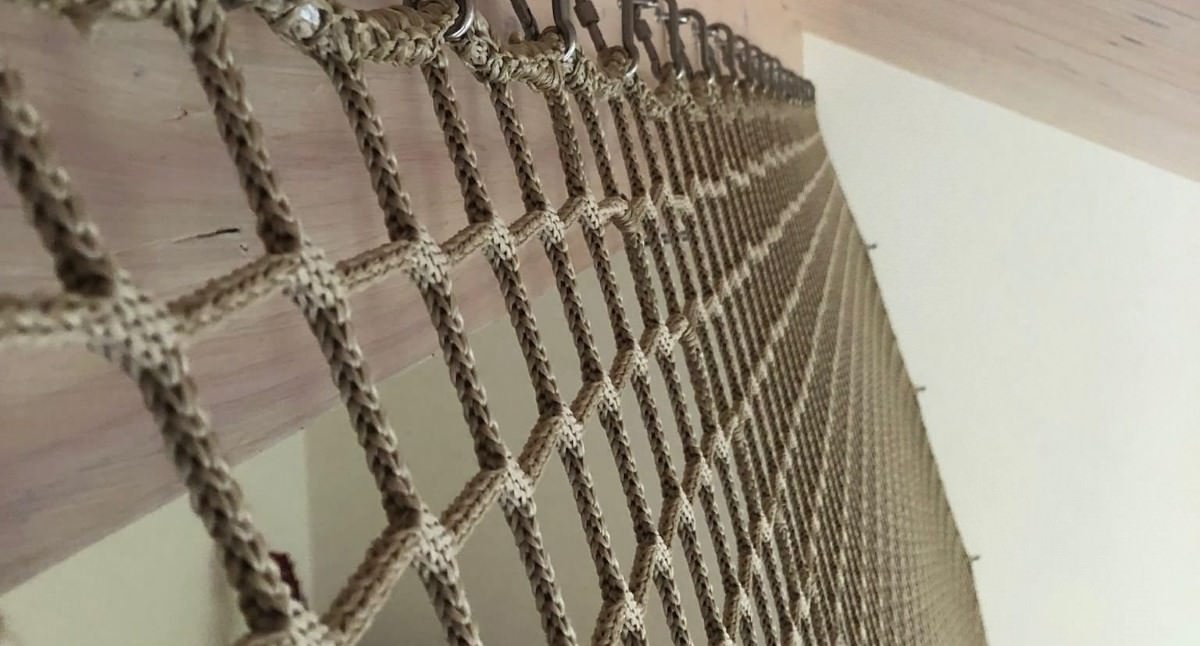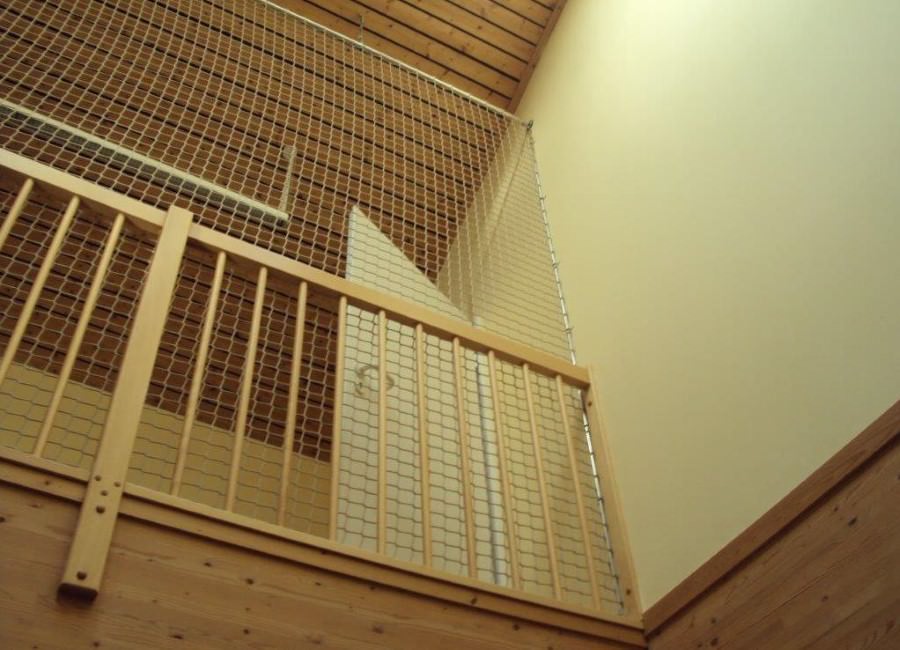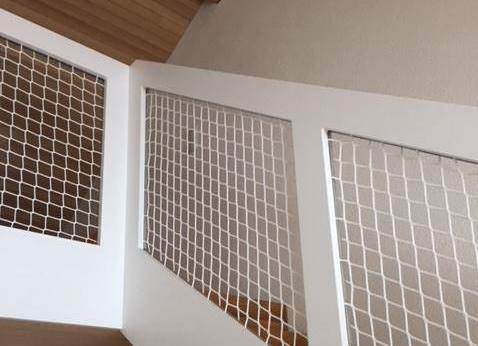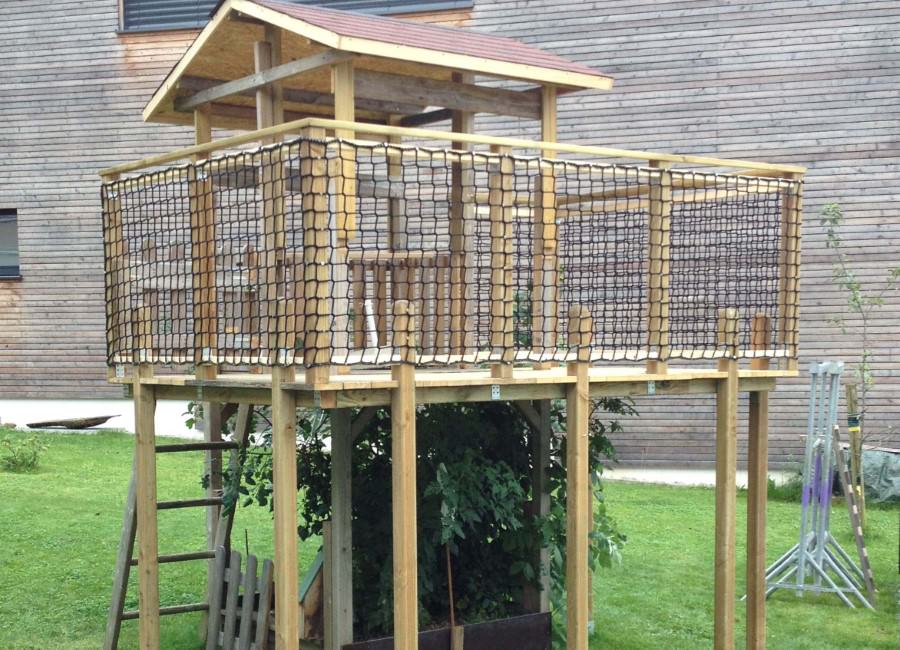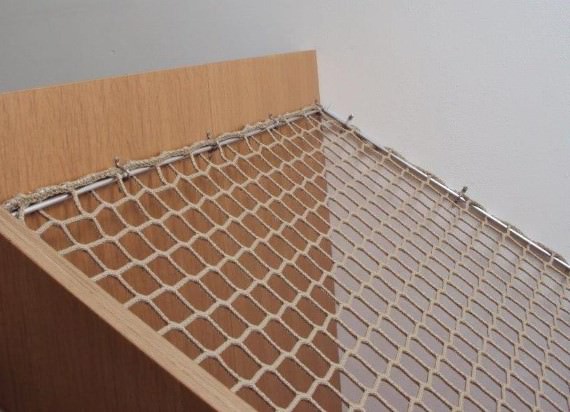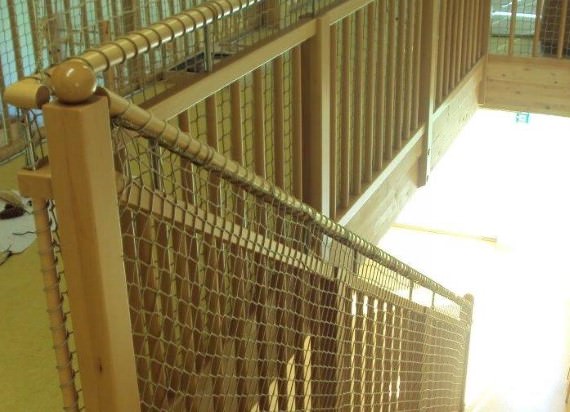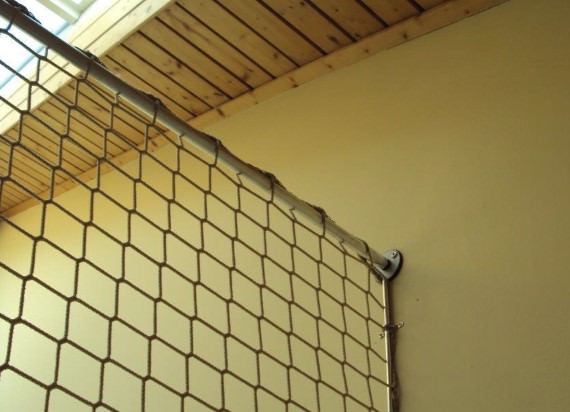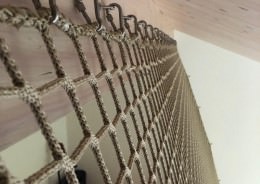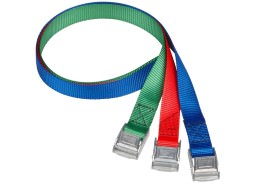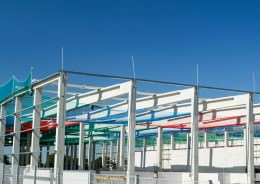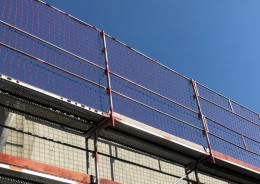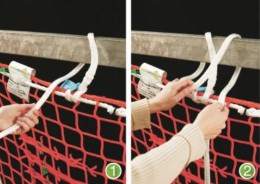Areas where children are present and where there is a risk of falling must be secured in a manner appropriate to their age. Enclosures must be designed to be childproof and must not encourage children to slide, climb, sit on or place objects on them.
The requirements for fall protection and guardrails are defined by the DGUV (German Social Accident Insurance) in regulation no. 82 "Accident Prevention Regulation for Daycare Facilities for Children". These regulations are further specified and described in DGUV regulation 102-602 "Child Day Care Facilities" and in DGUV information 202-093 "Safely Educating and Caring for the Youngest in Child Day Care Facilities".
The European Playground Equipment Standard EN 1176 is authoritative for the safety of playground equipment. DGUV information 202-022 "Outdoor play areas and playground equipment" (formerly GUV-SI 8017) provides recommendations for action and safety information based on this standard.
The following points provide an overview of this information as well as further notes on execution.
According to DGUV regulation 102-602, children's play areas where there is a risk of falling must be secured in a manner appropriate to their age. If it is to be expected that on elevated play levels climbing and clambering possibilities can be added to the enclosure (e.g. stacks of mattresses, small tables, chairs, shelves), the fall protection should ideally be led up to the ceiling of the room. Such protection can be provided by tightly stretched nets. Our kindergarten nets meet the requirements of the DGUV and are designed for the potential loads in the kindergarten area.
The nets can also be used for fall protection on playground equipment analogous to DIN EN 1176.
You can find the relevant DGUV regulations, rules and information on the subject of kindergarten nets at the following links:
According to DGUV regulation 102-602, children's play areas where there is a risk of falling must be secured in a manner appropriate to their age. If it is to be expected that on elevated play levels climbing and clambering possibilities can be added to the enclosure (e.g. stacks of mattresses, small tables, chairs, shelves), the fall protection should ideally be led up to the ceiling of the room. Such protection can be provided by tightly stretched nets. Our kindergarten nets meet the requirements of the DGUV and are designed for the potential loads in the kindergarten area.
The nets can also be used for fall protection on playground equipment analogous to DIN EN 1176.
Protective nets can be used to fill stair railings. They are a popular tool for securing stairs that have too large a distance between the balusters according to the current regulation.
Again, in addition to personal protection, the net can also serve to prevent objects from falling through the railing. Protective nets in this form can only be used as a railing infill, they do not replace a railing or handrail.
If an elevated level or stairway eye cannot be adequately secured by vertical barriers or enclosures, the use of horizontally tensioned fall arrest nets is also possible. These nets are used in contrast to lateral protection when the fall could not be prevented and persons have to be caught from free fall. When using this type of net, EN 1263 applies (see also "Safety Net Guidelines"). Lateral preventive protection is always preferable to the use of horizontal safety nets.
All elevated areas of playground equipment must be adequately secured against falling. We recommend preventive protection from a fall height of 0.60 m. Fall protection should be provided wherever pushing and shoving can cause a fall. The securing can be done with tautly stretched nets. Otherwise, the same guidelines apply with regard to vertical safety as for the safety of indoor play areas in accordance with DGUV regulation 102-602.
More detailed information can also be found in DGUV information 202-022.
According to DGUV regulation 101-002, enclosures on elevated play levels must be designed in such a way that the occupied area immediately behind them can be seen. Nets with a mesh size of at least 20 mm are considered a good choice in this respect.
If nets are to be used for securing hazardous areas or as fall protection for objects or persons, the load capacity of the material must be designed to meet the requirements of daycare facilities. We recommend using nets with a maximum mesh tensile strength of at least 800 N.
According to paragraph §11 of DGUV regulation 101-002, the opening width for enclosures should be limited to less than 11 cm in one dimension. With children under three years, this opening width must even be limited to 8.9 cm according to EN 1176-1.
Guardrails and safety devices must not tempt people to climb them. A "temptation to climb" can be observed with nets from a mesh size of approx. 80 x 80 mm. For this reason, the mesh size should be smaller when using protective nets. We recommend a maximum mesh size of 45 x 45 mm.
The suitability for the installation of safety nets in kindergartens and day care centers is not uniformly regulated. However, it should always be supervised and carried out by competent persons.
A person is considered "competent" if he or she can demonstrate basic knowledge of legal regulations and occupational health and safety provisions of the accident insurance institutions or sufficient practical work experience in the installation of safety nets. Suitable occupational groups are carpenters, joiners and metal workers.
Enclosures at occupied areas that are more than 1.00 m above another surface must be at least 1.00 m high. More detailed provisions may also result from the building laws of the respective countries or from workplace legislation. Irrespective of these regulations, the height of the guardrails must be at least 1.00 m.
The net should be mounted so that there is no gap of more than 4 cm at any point along the edge of the net. Continuous fastening is to be preferred. This can be achieved, for example, by clamping using profiles.
A safety net can act as a railing infill in the staircase area. For example, it is possible to secure stairs that have too large a distance between the balusters according to the current regulation.
If it is likely that access and climbing opportunities can be added to a railing or the enclosure on elevated play levels (e.g., stacks of mattresses, small tables, chairs, shelves), the fall protection should ideally extend to the ceiling of the room.
| Assembly Variants |
![Kindergarten Net Assembly with Bars]() | Bars and Clamps Profiles (round wooden bars, wooden slats, aluminum angles, etc.) can be used to achieve a continuous and very clean fastening. In this case, the net is threaded onto the profiles, after which they are fastened in the appropriate places. Alternatively, the edge of the net can also be clamped with a profile without it being threaded through the edge meshes in advance. |
![Kindergarten Net Assembly with Straps]() | Ropes, Cords and Wraps Ropes or cords may be used if drilling or other machining is not required or continuous attachment is desired. During installation, the net should be wrapped along the entire closing edge and captured with each mesh. Two to three meters of cord are required per meter of net edge. The strength of the rope depends on the intended use. |
![Kindergarten Net Assembly]() | Telescopic Rods Telescopic rods or profiles are suitable for bridging a distance without a fastening option (e.g. between two walls or between floor and ceiling). When mounting with telescopic rods, pay attention to the load-bearing capacity of the construction. |
Products
Further Guidelines & Info Pages
